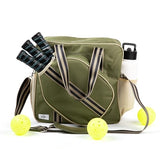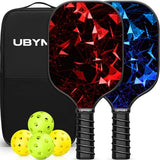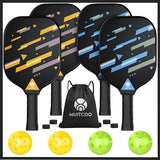Pickleball court dimensions and how to build a court
Do you want to build an outdoor pickleball court for a club, school or recreation center? If you know how to set up a tennis court, you are already halfway there as the techniques are almost the same. This guide will help you know the basics so you can construct a pickleball court with ease.
#1: Determine your space
Are you going to convert a badminton or tennis court into a pickleball court? Do you want to set up a multi-court complex? Do you want to start a court from scratch? Regardless of your situation, make sure you know the standard size for this court. Then you can make the necessary adjustments.
For instance, if you already have a tennis court, you can divide it into 4 pickleball courts in order to play multiple games at the same time. But if you want to build a multi-court system, there will no change in the overall dimensions and construction. However, you will build many courts on a big scale. Also, you will install fences with padding amidst every court.
- Court dimensions: 20 feet by 44 feet (singles and doubles play)
- Net height: 36'' at the sidelines and 34'' in the middle
- Play area: 30' by 60' is the standard size if you are going to convert a tennis court. However, for the tournament, the size is 34' by 65'.
#2: Opt for the materials for the court surface
If you are starting from scratch, or an existing court needs to be revamped, make sure you opt for the right type of court surface. Given below is the description of some popular court surface materials:
Snap-together plastic: This type of surfaces are applied over concrete or asphalt. It's a good choice if you don't want to make permanent changes to the surface of a pickleball multi-use court.
Asphalt: It can work well if you want to keep the costs low. However, this type of surface may require more upkeep down the road.
Concrete: Concrete is the best option if you want both value and durability.
#3: Choose perimeter fencing
Fencing around the court is important for keeping the ball within the area and keeping the spectators safe. You can choose from a lot of fencing types, but the best type is fencing made from wire. The reason is that they allow the spectators to clearly see what's going on inside the play zone. Aside from this, wire fencing allows the light to come in court. An experienced contractor can help you opt for the right type of fencing for installation. Just make sure the fencing is made with rust-resistant material and is safe for the players.
Fencing Dimensions: 10' height. Sometimes, it's 4' but the top of the fence should be padded.
#4: Lighting for a pickleball court
For pickleball courts lighting, you need to follow a standard protocol. Ideally, the court should have two 1,500 watt poles in it. Make sure each of the poles is a18' to 20' in height and fixed in the center, a minimum of 24'' back from the pickleball court.
#5: Buy the net systems for a pickleball court
As soon as you determined the space, court and surface materials, your next move is to get in touch with an expert so you can opt for the right net system. You can opt from different types of poles and systems, and each system comes with its own features. However, outdoor pickleball poles are designed in a way that they are strong enough to withstand the elements. Given below are the contents of an outdoor pickleball net system:
- Sleeves
- One outdoor pickleball net
- One ratchet
- Two poles
#6: Set up the court
Once you have chosen the surface type, fencing, lights, and other stuff, you need to set it all up. Given below are some tips that may help you throughout the process:
Once you have chosen the surface, lighting, fencing, and other stuff, your next move is to set everything up. Given below are a few tips that can help you throughout the building process.
Contact a professional installer
You can install a pickleball net system in your own court without worrying about anything. However, if you need to install the system for school pickleball play, clubs or recreate centers, you must follow the code.
The orientation of the court
Since these pickleball courts are set up outdoors, they are exposed to the weather elements that have a negative impact on the players' vision. Therefore, make sure you orient the court north-south.
The width of white court lines should be 2 inches. With sidewalk chalk, acrylic paint, orange masking tape, or green tape, you can draw marker lines. Given below are the standard lines for the court:
Baseline: These lines run side by side to the pickleball net on both the ends.
Sidelines: They run perpendicular to the net on both sides.
Non-volley line: They are 7 feet from the pickleball net and drawn on both sides of the net amidst sidelines and run parallel to the pickleball net.
Non-volley Zones: These zones have two sidelines around them: the net and the non-volley lines.
Centerlines: Found on both sides of the net and run between the baseline and the non-volley line.
Service courts: They go on both sides of the centerlines and have a baseline, sideline and non-volley line around them.
If you want to paint the court surface or marker lines, make sure you wait for the pain to dry for a day before you place your net system.
It's recommended that you follow the guidelines given by the USAPicketball Association to make sure you set up the court based on the regulation standards.
Are you all set to build a pickleball court? If so, you might want to go ahead and pick the best net system for your needs.







